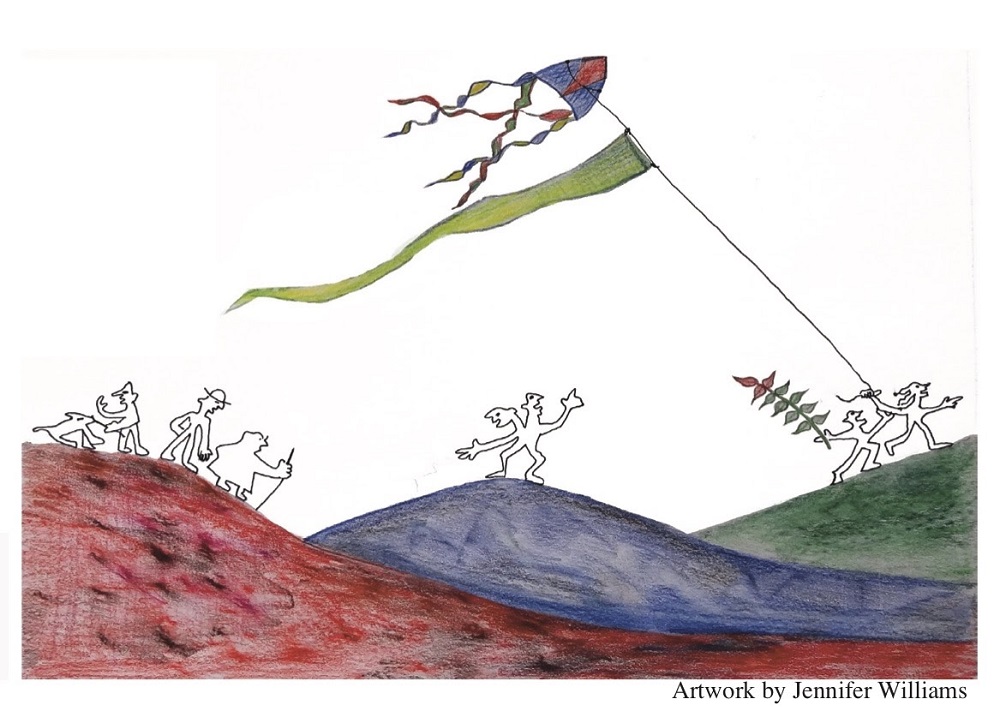We are living in such uncertain and volatile times. Everyone is searching for some ‘handle’ on the future? We are seeking to see what emerges and how to shape different futures – find a way forward through all the uncertainties and complexities.
Margaret Hefferman in her new book Uncharted: How to Map the future Together says:
‘Ineradicable uncertainty remains inherent to human life…it [is] the defining characteristic of the future… this leaves us uncomfortable and anxious’
Margaret Hefferman (2020) Uncharted: How to Map the Future Together; London: Simon & Schuster.
As narrative coaches we believe people can re-story their lives. Our clients’ lives are not predetermined, not set in some cosmic straightjacket, not fixed by their past no matter how constraining they feel it to be. Our very definition of coaching includes the central idea that coaching is the facilitation of mobility.
Our narrative process implies people are living on various story-arcs. Some come to us for coaching because a story-arc has come to an end – maybe they’ve been made redundant. Others may be in the middle of an important story-arc but are struggling or losing interest in their current trajectory. Many come to us from a place of profound change, in transmission between one stage and the next.
Our narrative process suggests story-lines can change. People can decide to author their lives differently, authoring and reauthoring their futures in any way they like within the constraints of their age, background, experience, gender, race and circumstance:
- People who became accountants because their parents pressured them to do it
- People who went into pharmaceuticals because their exam results were not good enough to do medicine
- People who wanted to be professional singers but could not afford the course fees and had to shelve their plans

How 3-Horizons helps us make our possible futures explicit
These story-arcs can be thought of as defining horizons. As we move into our futures, we can develop any number of future horizons.
This approach contrasts with the simple, more linear way of thinking about our future. We all sit in the present moment, looking at how we want things to be in the future, which can involve something that might or might not happen, something unknown, even something unknowable. It’s full of potential risk. But our possible futures are not all ‘out there’. They’re often already here, already present in some way.
3-Horizons is a tool that makes this explicit. Developed by Bill Sharpe and used to work on innovation, it applies to organisations and also to people in transition. The central idea behind Three Horizons is that we need to bring out our assumptions and make them about now, about an explicit future, then explore emerging change as a way to reframe what we think, what we want, and what we do.

The Three Horizons framework, describes the horizons like this:
- First Horizon – The current context and conditions, ‘business-as-usual’, our current business model, career or role. The focus of everything here is maintaining stability and keeping things going
- Third Horizon – This is what might be, or what could be. It requires some very significant transformational change, representing the world of possible futures, and visions of preferred futures
- Second Horizon – This comes in from left-field, totally disrupting the cosiness of the Horizon 1 status quo, and potentially clearing the ground for the emergence of Horizon 3
Kate Raworth, who wrote about Doughnut Economics, has a great video describing it, where she sets out the questions each horizon poses for people as they contemplate their possible futures.
In these complex times, the exact shape of the future can feel very unclear and is open to negotiation. Using the framework of the 3-Horizons model, we can add some scaffolding to our thoughts, hopes and fears for the future. The discipline of thinking about each horizon supports our capacity to be innovative and face the future with courage.
Bill Sharpe has also written a very accessible book that introduces this way of thinking, Sharpe, B. 2013. Three horizons: patterning of hope. (Triarchy Press, Axminster, Devon, UK.). His colleague, Graham Leicester, has written an equally accessible book on the subject, Leicester, G. 2016 Transformative Innovation: A Guide to Practice and Policy (Triarchy Press, Axminster, Devon, UK.).
The 3-Horizons framework also helps us address what Margaret Hefferman calls ineradicable uncertainty. Margaret Hefferman’s ideas on the uncertainty of the future are set out here in her TED Talk – The human skills we need in an unpredictable world | Margaret Heffernan
Thinking on…
Are you thinking deeply about your future? Are you struggling to make sense of what the future holds for you? Then give us a call
About us
We are a team of highly experienced executive coaches, focused on developing leaders working in high-stakes environments across diverse sectors. We create space for leaders to step back, think clearly, and navigate complexity with confidence and renewed purpose. Our narrative-based approach blends deep listening, incisive questioning and rigorous thinking with a strong commercial focus.
“Our Knowledge Centre is designed to resource leadership practice and development. The articles we share on this site are intended to spark fresh thinking, offer practical tools, and support continuous professional growth.”
Jude Elliman
Founder
Our approach
We work with leaders to build their leadership brand and impact. Our approach includes:
✔ Challenge and support: creating time and space for rigorous thinking and problem-solving
✔ Narrative coaching: defining and refining the stories that shape leaders and organisations
✔ Commercial focus: cutting through complexity for strategies that inspire change and drive results
We help leaders make crucial decisions, align teams for greater effectiveness, and envision new possibilities for the future.
